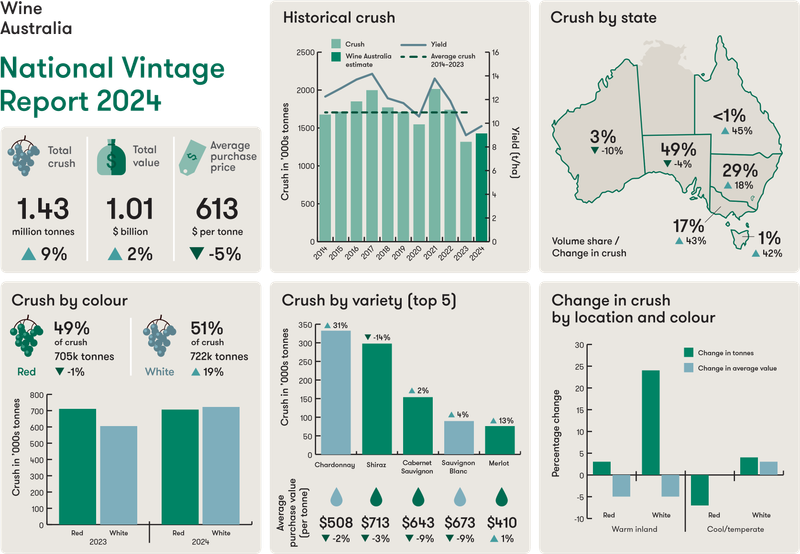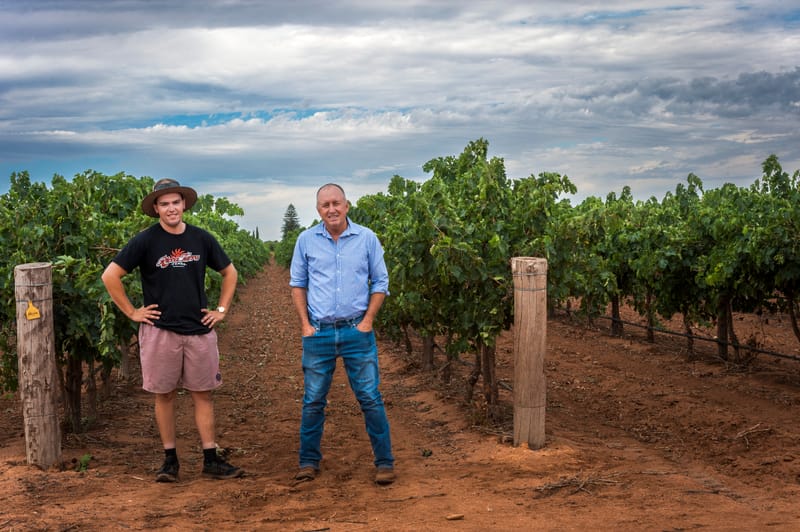Adrian Hoffmann, WGCSA Region Two chair
How is the wine quality from the 2022 vintage looking? The wines from the 2022 vintage are looking quite strong for us. The cooler-than-average summer meant a delay in ripening and extra time on the vine, hence why the wines have developed a lot of...

How is the wine quality from the 2022 vintage looking?
The wines from the 2022 vintage are looking quite strong for us. The cooler-than-average summer meant a delay in ripening and extra time on the vine, hence why the wines have developed a lot of flavour.
Where we were, we got the fully ripe, rich tannins the whole way through. It was quite a strong vintage – from a volume and quality point of view – to follow up on 2021.
But in saying that, there were other growers that suffered through hail, a bit of frost, and the cooler season as well.
Have the cooler summer temperatures recently benefited fruit quality?
It is beneficial, but it does create problems as well. We’re looking for that richer, riper style, so we have to let the fruit hang a bit. We only finished vintage in May this year, so it draws the vintage out a bit for us, and there’s the patience needed to get the fruit ripe. Going into the current season now it’s all about wood selection, especially in blocks that have been frosted or hit by hail. We’re leaving wood for the coming vintage, and pruning.
Does that later vintage affect vine health at all?
The vines definitely don’t have that break after they’ve been harvested and they store carbohydrates, so some of the carbohydrate storage would be quite depleted in some blocks.
We’ve combated that by spreading a bit of extra compost, and nutrients, to help the vines through.
Normally they get a good four to six-week break before they drop leaves and go into dormancy, but a lot only had two or three weeks with no fruit on the vine. There will definitely be less carbohydrate storage this year.
How is the demand for red varieties looking ahead of 2023?
Everyone knows shiraz and cabernet are the varieties probably in oversupply, but there’s strengthening demand for grenache, mataro, and for white varieties in the Barossa as well.
The Chinese market hasn’t come back on, and they were really dominant in that red sector, especially shiraz and cabernet.
When people talk about oversupply, it’s really only in those couple of varieties. When you go through the Adelaide Hills, and Eden Valley, there’s a real strengthening in riesling and whites. Growers should take the opportunity to rework those vines, and focus resources on some of the other varieties.
Should growers focus on other varieties in 2023?
We definitely saw a softening in prices last year. The hailstorm and frost events brought balance back to the Barossa and you didn’t see those big fluctuations in prices. But looking forward at how La Nina and the Indian Ocean Dipole is all working, we’re looking at a wetter-than-average spring again this year, and potentially a cooler summer as well. So we’re potentially looking at very similar conditions to what we’ve had the last two years, which concerns me a little bit because there’s the potential to create pressure and strain on supply. If people can pick up a tonne of Barossa shiraz, they aren’t going to get it from other regions.
My encouragement to growers is to grow within your means this year, even if you grow a bit less, and to concentrate on the other varieties in your vineyard. We saw price increases in grenache last year, so anything we lost on the shiraz price we picked up there.
Are we seeing growing demand in other overseas markets for Australian wine?
Most of the other markets are strengthening and getting better serviced by the Australian wine industry, so it was really only the Chinese market that dropped off.
A lot of other wine companies that are established in other markets are going from strength to strength, and increasing brand recognition and sales. You really only have to look at the bulk wine pricing to get a fairly good indication of what’s happening in the industry.





